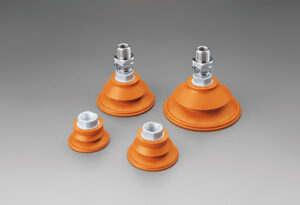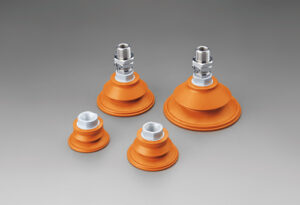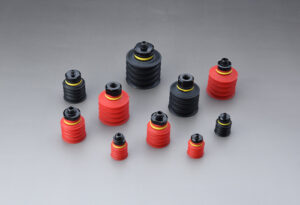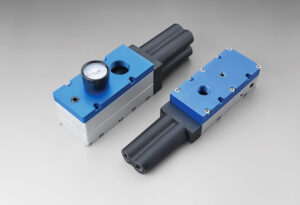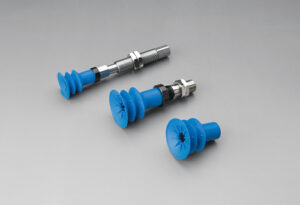Introduction
Vacuum Suction Cups are integral to various industries, from manufacturing to logistics. Their ability to securely grip and manipulate objects is pivotal to efficient automated processes. However, ensuring these cups’ reliable vacuum seal performance is essential for their success.
In this article, we will delve into the intricacies of Vacuum Suction Cup applications, understanding the challenges users often face in maintaining a dependable vacuum seal. We will also explore innovative solutions to address these challenges. Whether you are an industrial engineer, a packaging specialist, or a procurement officer searching for the right Vacuum Suction Cup factory or supplier, this guide will provide valuable insights.
Understanding Vacuum Suction Cup Operation
Before we delve into the challenges and solutions, let’s begin by understanding the fundamental principles of how Vacuum Suction Cups operate.
Vacuum Suction Cups, often called vacuum grippers, utilize negative pressure to create a seal between the cup’s surface and the object to be manipulated. This seal generates a powerful grip, allowing the cup to hold the thing securely. The suction cup’s vacuum system coordinates with automated machinery to perform tasks with precision and reliability.
These cups have applications across various industries, including manufacturing, warehousing, and food and beverage. The versatility of Vacuum Suction Cups makes them a crucial tool in achieving automation and streamlining operations.
In the following sections, we will address the challenges faced in maintaining the vacuum seal performance of these cups and explore practical solutions to overcome them.
Challenges in Maintaining Reliable Vacuum Seal Performance
Vacuum Suction Cups are not without their challenges. While they offer exceptional gripping capabilities, several factors can affect their vacuum seal performance. Some of the primary challenges include:
Surface Condition and Contamination
The condition of the surface the suction cup adheres to plays a significant role in maintaining a reliable vacuum seal. Irregular surfaces or those with imperfections can result in air leakage, compromising the grip.
Contamination, such as dust, grease, or moisture, can also interfere with the seal’s effectiveness. This is a common concern in manufacturing environments, as the working environment could be better.
Temperature Variations
Temperature fluctuations can be a significant factor influencing vacuum seal performance. Sudden temperature changes can lead to variations in air pressure, which may cause the seal to weaken or break. This is particularly critical in industrial applications where extreme temperature conditions exist.
Vacuum Loss
During extended operations, Vacuum Suction Cups may experience gradual vacuum loss. This loss can occur due to wear and tear or imperfections in the cup material. To maintain optimal performance, it is crucial to address this issue promptly.
Solutions for Overcoming Vacuum Seal Challenges
Now that we’ve explored the challenges of maintaining reliable vacuum seal performance in Vacuum Suction Cup applications let’s delve into innovative solutions to address these challenges.
Optimizing Surface Preparation
To ensure a secure vacuum seal, meticulous surface preparation is crucial. Users should clean and smoothen the gripping surface to eliminate irregularities that might impede the seal. Particular attention should be paid to removing contaminants, such as dust, grease, or moisture, which can undermine the vacuum’s effectiveness.
Additionally, choosing the suitable material for the suction cup itself is essential. Many manufacturers offer a variety of materials, each suited to specific applications. Selecting the appropriate material can significantly impact the performance and longevity of the Vacuum Suction Cup.
Adaptive Suction Cups
In recent years, advancements in adaptive suction cups have been pivotal in mitigating vacuum seal issues. These cups have sensors and technology that constantly monitor the vacuum seal. When the seal weakens or is compromised due to environmental factors, adaptive suction cups can automatically adjust their grip, maintaining a secure hold on the object. This technology is particularly beneficial in dynamic environments with frequent changes in surface conditions and temperature.
Seal Monitoring and Maintenance Routines
Implementing proactive maintenance routines can go a long way in preventing vacuum seal performance issues. Regularly scheduled checks can help identify wear and tear on the suction cups or any potential issues with the vacuum system. By catching problems early, maintenance teams can take corrective actions to maintain peak performance.
Material Considerations
As previously mentioned, the material of the Vacuum Suction Cup plays a crucial role in its ability to maintain a reliable vacuum seal. Different materials offer varying degrees of resilience, durability, and resistance to environmental factors. When selecting a Vacuum Suction Cup, it’s essential to consider the specific needs of your application and choose a material that aligns with those requirements.
Case Studies
To illustrate how these solutions are applied in real-world scenarios, we present a few case studies of companies and industries that have successfully addressed vacuum seal challenges. These examples highlight the benefits of implementing the discussed solutions and demonstrate the positive impact on operational efficiency.
Case Study 1: Manufacturing Industry
A leading manufacturing company faced issues with vacuum seal performance in their robotic assembly line. They implemented adaptive suction cups with seal monitoring technology and optimized surface preparation techniques. This improved the reliability of their operations and reduced production downtime, resulting in significant cost savings.
Case Study 2: Food and Beverage Sector
Maintaining a secure vacuum seal is critical for packaging and handling delicate products in the food and beverage sector. A food processing plant reduced product wastage by carefully selecting the appropriate material for their Vacuum Suction Cups and improved overall packaging efficiency.
Best Practices
To ensure that your Vacuum Suction Cups consistently maintain a reliable vacuum seal, following best practices is essential. These guidelines can help you optimize their performance in your specific application:
- Regular Maintenance: Establish a routine for inspecting and maintaining your Vacuum Suction Cups. This includes checking for wear and tear, cleaning the gripping surface, and promptly replacing worn-out components.
- Appropriate Material Selection: Choose the suitable material for your Vacuum Suction Cups based on your application’s requirements. Consult a reputable Vacuum Suction Cup supplier or factory to determine the most suitable material.
- Surface Preparation: Pay meticulous attention to surface preparation. Clean and smooth the gripping surface, and ensure it is free from contaminants. Proper surface preparation is essential for a reliable vacuum seal.
- Adaptive Technology: Consider using adaptive suction cups equipped with sensors and technology that can automatically adjust the grip in response to changes in the vacuum seal. This is particularly beneficial in dynamic applications.
- Training and Education: Train your team on the proper use and maintenance of Vacuum Suction Cups. Well-informed operators can help extend the lifespan of the cups and optimize their performance.
Future Trends
As technology advances and industries evolve, the future of Vacuum Suction Cups promises even more enhancements. Here are some emerging trends to keep an eye on:
- Advanced Materials: Research into new materials with enhanced grip and durability characteristics will continue, offering even more options for specific applications.
- Integration with Industry 4.0: Integrating Vacuum Suction Cups with Industry 4.0 technologies, including the Internet of Things (IoT) and data analytics, will allow for more intelligent and data-driven decision-making in various industries.
- Sustainability: Manufacturers are increasingly focusing on sustainable and eco-friendly materials and processes, which will impact the future development of Vacuum Suction Cups.
- Customization: As technology advances, custom-made Vacuum Suction Cups tailored to specific applications will become more accessible and cost-effective.
Conclusion
In conclusion, maintaining a reliable vacuum seal in Vacuum Suction Cup applications is vital for the success of various industries. Challenges such as surface conditions, temperature variations, and vacuum loss can be addressed through proper surface preparation, material selection, adaptive technology, and regular maintenance.
As you seek the right Vacuum Suction Cup factory or supplier, remember the importance of selecting the appropriate material and technology for your unique application. Following best practices and staying informed about emerging trends will ensure that you can take full advantage of these versatile tools’ capabilities.
The world of Vacuum Suction Cups is ever-evolving. As industries continue to embrace automation and robotics, these devices will play an increasingly crucial role in achieving efficiency, precision, and reliability. Whether you are involved in manufacturing, logistics, or any other industry, understanding and optimizing Vacuum Suction Cup performance will contribute to your success.
Feel free to contact a reputable Vacuum Suction Cup supplier or factory to explore further the options and solutions available for your needs.


